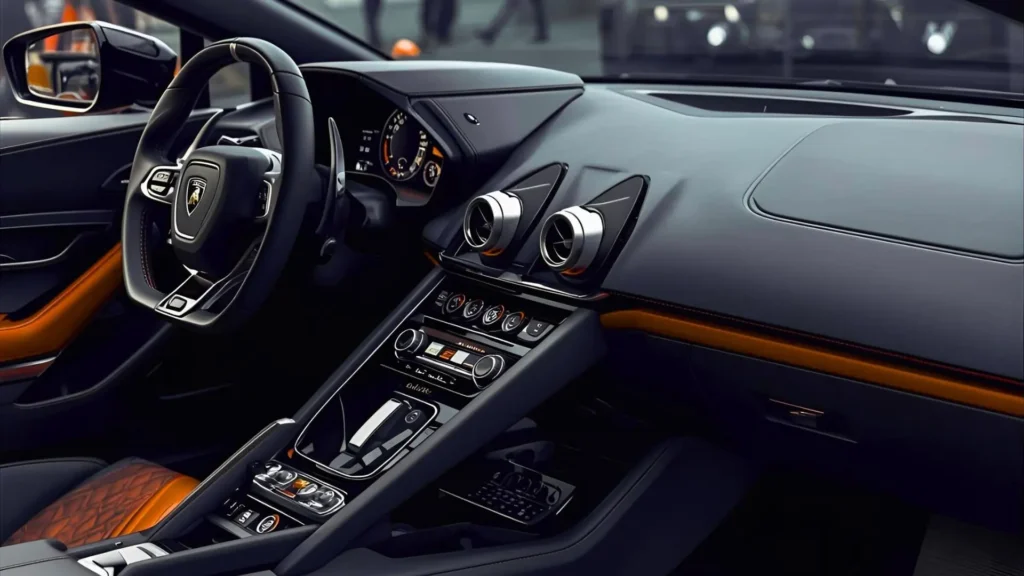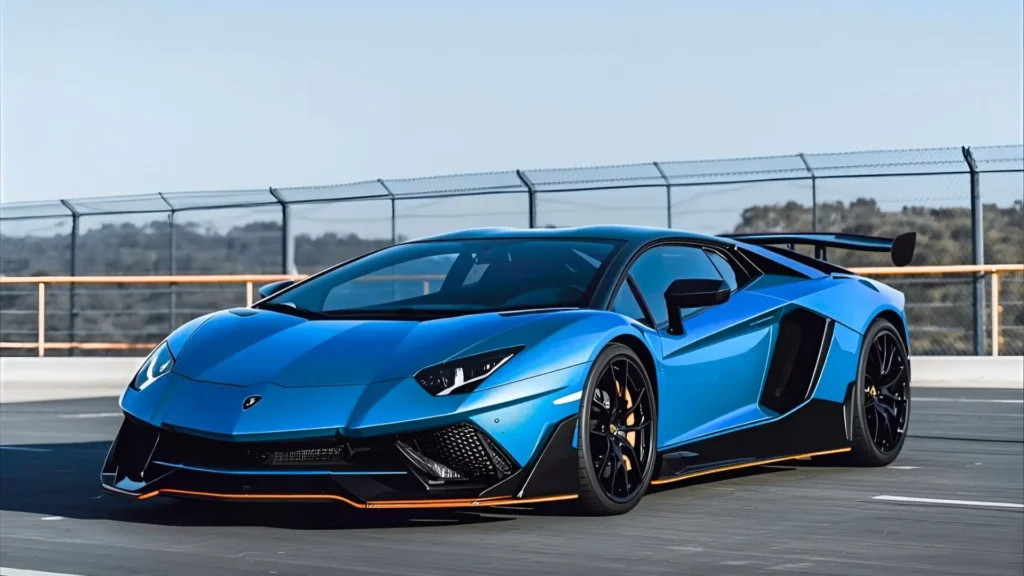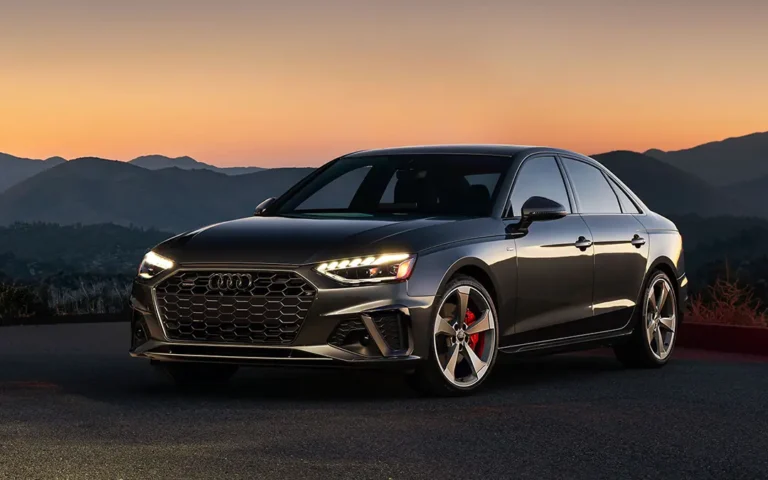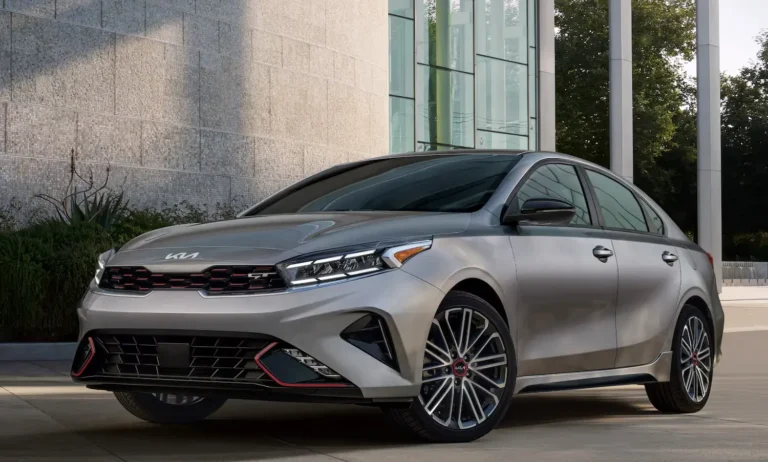Lamborghini Aventador SVJ: Specs & Performance Review
The Lamborghini Aventador SVJ is a beast on wheels. This car shows what happens when Italian engineers push limits. SVJ means “Superveloce Jota” in Italian. The name tells you this car is special.
Lamborghini launched this monster in 2018. It broke records at Germany’s famous Nürburgring track. The car finished the lap in 6 minutes and 44 seconds. That was faster than any other production car at that time.
This machine represents pure power. It has a roaring V12 engine that sounds like thunder. The design looks angry and ready to attack the road. Every part serves a purpose.
Only 963 people in the world could buy this car. That makes it rare and valuable. The price tag started at around $517,000. Today, these cars sell for even more money.

The Monster Engine under the Hood
The heart of this beast is massive. A 6.5-liter V12 engine sits behind the driver. This engine breathes naturally without turbochargers. That makes it special in today’s world.
Power Numbers:
- Engine size: 6.5 liters
- Horsepower: 770 HP
- Torque: 531 pound-feet
- Top RPM: 8,700 revolutions per minute
- Fuel type: Premium gasoline only
Speed Records:
- 0 to 60 mph: Just 2.8 seconds
- 0 to 124 mph: Only 8.6 seconds
- Top speed: Over 350 mph
- Stopping from 62 mph: 98 feet
The engine screams when you push the gas pedal. It responds instantly to your foot. There is no delay or waiting. The power comes on smooth and strong.
This V12 produces 770 horses under your right foot. That’s more power than most race cars. The engine spins up to 8,700 times per minute. That’s crazy fast for any engine.
The Seven-Speed Rocket Gearbox
The transmission shifts gears super fast. Lamborghini calls it the ISR system. This stands for Independent Shifting Rods.
Gearbox Details:
- Type: Seven-speed automated manual
- Shift speed: 50 milliseconds in race mode
- Drive system: All four wheels get power
- Power split: 30% front and 70% rear
- Driving modes: Street, Sport, and Race
Each gear has its own shifting rod. This means changes happen lightning quick. You barely notice the car switching gears. The system works faster than you can blink.
The all-wheel-drive system is smart. It sends power where it’s needed most. During hard acceleration, more power goes to the rear wheels. This helps the car launch like a rocket.
Three driving modes change the car’s personality. Street mode makes it calmer for daily use. Sport mode wakes everything up. Race mode turns it into a track weapon.
Size and Weight Facts
This car is wide and low. It hugs the road like a racing car. The body stretches nearly 195 inches long.
Body Measurements:
| Dimension | Measurement |
| Length | 194.6 inches |
| Width | 82.6 inches |
| Height | 44.7 inches |
| Wheelbase | 106.3 inches |
| Ground Clearance | 4.3 inches |
Weight Information:
| Weight Type | Pounds |
| Dry Weight | 3,362 lbs |
| Curb Weight | 3,472 lbs |
| Weight Distribution (Front) | 43% |
| Weight Distribution (Rear) | 57% |
Lamborghini cut weight everywhere possible. They used carbon fiber body panels. The exhaust system uses lightweight titanium. Even the wheels are forged aluminum to save pounds.
The car sits low to the ground. This helps it slice through air better. A nose lift system raises the front when needed. This protects the bumper from speed bumps.
The Magic Wing Technology
The SVJ has a smart wing system. Lamborghini calls it ALA 2.0. This technology changes how air flows around the car.
Wing System Features:
- Front flaps open and close automatically.
- Rear wing adjusts its angle.
- Left and right sides work independently.
- Changes happen in half a second.
- Produces 1,168 pounds of downforce at top speed.
The wing works like magic. When you need speed, it reduces drag. When you need grip, it creates downforce. The system thinks faster than any human driver.
The rear wing has three parts. Each part moves separately. During corners, the outside wing creates more downforce. This helps the car turn sharper and faster.
The front splitter has hidden flaps too. These open on straight roads. This lets the car slip through air easier. In corners, they close to push the front down.
Racing Suspension Setup
The chassis uses carbon fiber construction. This material is light but super strong. The frame weighs only 506 pounds by itself.
Suspension Parts:
- Front setup: Double wishbone design
- Rear setup: Double wishbone design
- Shock type: Magnetic fluid dampers
- Adjustment: Three stiffness levels
- Design: Racing push-rod style
The suspension comes from Formula 1 racing. Push-rod design places shocks horizontally. This lowers the center of gravity. The car feels glued to the road.
Magnetic dampers adjust in milliseconds. They read the road constantly. The suspension gets stiffer or softer as needed. This happens without you noticing.
Each driving mode changes suspension feel. Street mode keeps things comfortable. Sport mode firms everything up. Race mode makes it stiff for track use.
Powerful Carbon Brakes
Stopping power matches the acceleration. The brakes use carbon ceramic discs. These work better than regular steel brakes.
Brake Setup:
- Front disc size: 15.7 inches
- Rear disc size: 15 inches
- Front pistons: Six per caliper
- Rear pistons: Four per caliper
- Material: Carbon ceramic reinforced
Wheel Information:
- Front wheel size: 20 inches
- Rear wheel size: 21 inches
- Front tire width: 255 millimeters
- Rear tire width: 355 millimeters
- Tire brand: Pirelli P Zero Corsa
Carbon ceramic brakes handle heat better. They don’t fade after hard use. The discs are also lighter than steel. This reduces weight on each corner.
The rear tires are massive. They measure 14 inches wide. This rubber puts all that power to the ground. Pirelli makes special tires just for this car.
Inside the Cockpit
The interior mixes race car with luxury. Carbon fiber is everywhere you look. Alcantara fabric covers most surfaces.
Interior Items:

- Seats: Two carbon fiber buckets
- Seat covering: Alcantara suede
- Steering wheel: Flat bottom with carbon fiber
- Screen: Digital display for driver
- Touch screen: 8.4 inches for controls
- Sound system: Premium speakers
- Climate: Automatic dual-zone
- Materials: Carbon, Alcantara, aluminum, leather
The seats hug your body tight. They’re built for hard driving. Electric motors adjust them to fit. The Alcantara grips your clothes during corners.
The steering wheel is flat on bottom. This gives your legs more room. All important controls sit on the wheel. You never need to take hands off while driving.
A digital screen replaces old-style gauges. You can customize what information shows. The display is clear and easy to read quickly.
Aggressive Exterior Design
The body looks ready to fight. Sharp angles and aggressive lines cover every surface. Nothing is there just for looks. Every vent and wing has a job.
Outside Features:

- Front splitter with active flaps.
- Large side air scoops.
- Carbon fiber side skirts.
- Huge rear diffuser.
- Three-part active wing.
- Titanium exhaust with three tips.
- LED headlights in Y-shape.
- Carbon fiber body panels.
- Carbon fiber mirrors.
The front end looks mean. A big splitter cuts through air. Large intakes feed the hungry engine. LED lights form Lamborghini’s signature Y-shape.
Side scoops are bigger than normal. They feed cool air to the engine. The side profile is low and wide. This makes the car look fast while standing still.
The rear dominates your view. A massive wing sits on top. Below that, a huge diffuser controls airflow. Three exhaust tips poke out the back.
Smart Computer Systems
Modern electronics control everything. Multiple computers talk to each other constantly. They work together to make driving easier and faster.
Electronic Features:
- Drive mode selector with three settings.
- Stability control with adjustable levels.
- Variable steering ratio system.
- Active suspension control.
- Custom EGO mode for personal settings.
- Traction control with multiple stages.
- Launch control for maximum acceleration.
- Performance data recorder.
The drive mode selector changes everything at once. One switch adjusts engine, transmission, suspension, and steering. The car transforms its personality instantly.
Launch control helps you accelerate perfectly. The system manages wheel spin automatically. Just hold the brake and gas together. Release the brake and hold on tight.
EGO mode lets you mix settings. You can have race mode engine with street mode suspension. Every driver can create their perfect setup.
What Makes It Different
The Aventador SVJ stands apart from other supercars. Several things make it unique and special.
Special Features:
- Natural V12 engine without turbos.
- Active wing system with independent sides.
- One-piece carbon fiber chassis.
- Scissor doors that open upward.
- High-revving engine sound.
- Track record holder status.
- Limited production numbers.
- Jota heritage name.
Most competitors use turbo engines now. The SVJ sticks with natural breathing. This gives instant response and amazing sound. The engine sings instead of whistles.
The active wing is smarter than others. Left and right sides work separately. This helps the car corner faster. No other system works quite like this.
Carbon fiber construction is rare. Most cars mix materials. The SVJ uses a single carbon piece. This makes it incredibly stiff and light.
Fuel Use and Emissions
This car drinks gas fast. Performance comes before efficiency. That’s what supercar buyers expect and want.
Fuel Numbers:
- City driving: 8.3 miles per gallon
- Highway driving: 18.5 miles per gallon
- Combined average: 13.1 miles per gallon
- Tank size: 22.5 gallons
- CO2 output: 442 grams per kilometer
- Required fuel: 98 octane premium
The big V12 needs lots of fuel. Hard driving uses even more gas. The tank holds enough for about 300 miles. That’s in gentle driving conditions.
Premium fuel is required. Regular gas will damage the engine. The computer needs high octane for proper timing. Never put cheap gas in this car.
These numbers don’t worry buyers. People who can afford this car don’t care about gas prices. They want maximum performance always.
Production and Rarity
Lamborghini made very few of these cars. Limited numbers make them valuable. Collectors hunt for clean examples now.
Production Facts:
- Total made: 963 cars worldwide
- Coupe version: 900 units
- Roadster version: 800 units
- Special edition: 63 units (SVJ 63 model)
- Build years: 2018 to 2021
- Original price: $507,373
Every car sold before production ended. The waiting list was long. Some people waited years for delivery. Many buyers ordered multiple cars.
The SVJ 63 was extra special. Only 63 were built worldwide. This commemorated Lamborghini’s founding in 1963. These cars had unique colors and badges.
Values are climbing on used examples. Clean, low-mile cars bring premium prices. Some sell for more than new price. This trend will likely continue forever.
Care and Maintenance
Owning this car requires deep pockets. Service costs are high but necessary. Proper care keeps everything working perfectly.
Service Details:
- Regular service: Every year or 9,320 miles
- Major service: Every two years or 18,640 miles
- Original warranty: Three years unlimited miles
- Extended warranty: Available through dealer
- Tire life: Varies greatly by use
- Brake service: Expensive but lasts long
Annual service isn’t cheap. Expect to pay several thousand dollars. Oil changes use special synthetic fluids. The V12 takes a lot of oil.
Tires wear fast with hard driving. Track use can destroy tires quickly. A set of replacement tires costs thousands. The rear tires are especially expensive.
Carbon brakes last longer than steel. They can go 60,000 miles or more. Replacement costs around $15,000 for all four corners. That’s still cheaper than replacing them often.
The Driving Feel
Behind the wheel is pure excitement. Every drive becomes an event. The car demands your full attention always.
Driving Experience:
- Steering: Sharp and precise feeling
- Throttle: Instant response to input
- Engine sound: Screaming V12 symphony
- Visibility: Typical supercar challenges
- Daily use: Possible but difficult
- Track ability: World-class performance
- Power delivery: Smooth and progressive
- Handling: Neutral with slight tail happiness
The steering wheel talks to your hands. You feel everything through the rim. The car tells you exactly what’s happening. This builds confidence when pushing hard.
Throttle response is instant. The engine jumps at the slightest input. There’s no waiting or delay. Power arrives immediately and violently.
The exhaust note is unforgettable. It screams toward 8,700 RPM. The sound gives you chills every time. This is what supercars should sound like.
Daily driving is challenging but doable. The car is wide for tight spaces. Ground clearance is low for driveways. The ride is firm but not brutal.
History and Legacy
This car marks the end of an era. It’s one of the last natural V12 supercars. Future models will use electric help or go full electric.
Historical Points:
- Follows 50 years of V12 flagships.
- Continues the Jota performance name.
- Represents peak natural aspiration.
- Set multiple track records.
- Already considered a future classic.
- Racing technology in street form.
The Aventador SVJ completes a long line. Miura, Countach, Diablo, Murciélago came before. Each generation got better and faster. The SVJ sits at the top.
Jota is a special name. The original Miura Jota was legendary. Later models wore the badge proudly. SVJ continues this racing tradition perfectly.
Natural V12 engines are disappearing. New rules force electric motors. The SVJ might be the last pure screamer. That makes it historically significant already.
Conclusion
The Lamborghini Aventador SVJ represents the ultimate supercar achievement. Its 770-horsepower V12 engine delivers brutal acceleration and an unforgettable sound. The active aerodynamics and carbon fiber construction set new standards. This Italian masterpiece already appreciates in value. While daily driving proves challenging, track performance is mind-blowing. The SVJ marks the end of naturally aspirated V12 supercars before electrification takes over. This makes it not just a performance car, but an important piece of automotive history that collectors will treasure forever.







